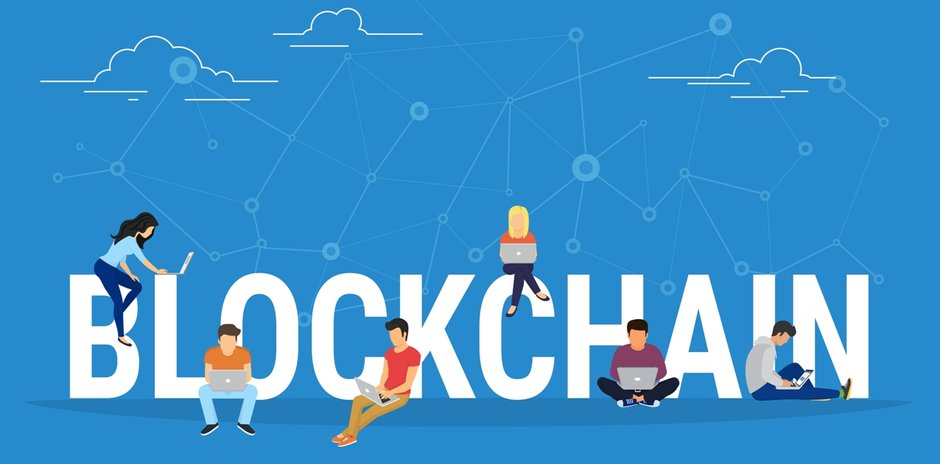Today, there is growing demand for vehicle data collection to improve provision of aftermarket services to drivers – such as navigation, predictive repair and maintenance, entertainment and remote control functions. However, no solution currently exists to incentivize drivers to share their driving data.
Chan Kong Hoe, general manager for solution sales, Asia Pacific, Hewlett Packard Enterprise (HPE), said, “Unlike on digital platforms where data sharing is commonly monetized; collecting and analyzing real-time vehicle data for commercial purposes is still in its nascent stages, due to the following factors:
- Lack of clear legislation and authority on vehicle data gathering
- No common practical platforms or reward systems to transact data
- High initial costs of setting up the ecosystem for data-gathering
“Our blockchain solution prototype will look to generate consumer awareness on the monetary value of their vehicle data, and the benefits of having control over whom they want to share the data with,” Chan also said.
Enterprise IT News has a further chat with Chan about HPE’s new private blockchain-powered initiative.
EITN: Please share more technical details about your blockchain and who are the tech vendors involved in this private blockchain?
Chan: Our first-use case for vehicle-to-anything (V2X) communication is to implement a blockchain solution prototype in an Audi Q2 with rain sensor data. This prototype is based on an Ethereum-based private blockchain hosted on Microsoft’s Azure Cloud and HPE’s Edgeline Gateways, which allows car data to be captured directly from the vehicle’s Controller Area Network (CAN) bus. The prototype will function as such:
- A data-buyer publishes a funded ‘Smart Contract’ on a private Ethereum Blockchain, hosted on Microsoft Azure, and defines the conditions with a GPS fence and an interest for live rain data.
- A connected smart car accepts the Smart Contract when it is able to meet the conditions and provide live sensor data from its CAN bus to the Smart Contract.
- The Smart Contract validates the data, checks that conditions are fulfilled, and releases funds from the Smart Contract to the car wallet. In exchange, the data is send to the data-buyer.
So far, we are in talks with major OEMs and Tier 1 component suppliers of the vehicle manufacturing industry, evaluating a deeper integration into the car and other technical aspects – vendor names cannot be disclosed at this stage of evaluation.
EITN: Is it based upon Proof of Work consensus method and is the payment based upon Ethereum coins?
Chan: The current prototype’s technology is secure by design and allows all participants to verify and audit transactions. Authentication is done through mass collaboration powered by collective self-interests, or the Proof of Work consensus method. This creates a decentralized and distributed digital ledger that records transactions across many computers so that the record cannot be altered retroactively, and results in a robust workflow where the uncertainty on data security is rendered marginal.
The solution is centered on an Ethereum-based private blockchain, where transactions occur only if the connected vehicle is able to provide live and relevant sensor data to validate the funded ‘Smart Contract’.
EITN: What is the purpose of collecting vehicle sensor data?
Chan: Gathering live data from operating vehicle parts – including rain sensors, shock absorbers, brakes or fuel tanks – along with navigation and GPS data, can be beneficial to many industries such as s retailers, insurance companies, road authorities and obviously automobile manufacturers. Real-time data like weather and road conditions, or even the amount of fuel remaining while driving on a set route, can not only be leveraged for predictive analytics, but also for drivers to be remunerated and incentivized when sharing their vehicle data.
EITN: Who would participate in this blockchain?
Chan: Our long-term vision for the blockchain prototype is to enable new business models within a broad ecosystem where drivers have full control over what data they share. Currently, we are engaging traditional OEMs, automobile manufacturers, third-party vendors of vehicle services, and most importantly, consumers to participate. Furthermore, HPE is designing and building global connected-mobility platforms for major carmakers, and we believe our Intelligent Edge expertise allows us to bring blockchain technology into a system that communicates very selectively with its environment.
EITN: What would be the top business implications of this vehicle data?
Chan: Blockchain as a concept will revolutionize decentralized transactions between unknown parties, and in this aspect can include carpooling, data-monetization and load-tracking. Our current prototype is able to perform the transaction in seconds, and successful implementation of the technology can be extended to a wide range of commercial applications, such as:
- Oil and gas companies obtaining fuel level and mileage data in vehicles to provide drivers with predictive route mapping to nearby pump stations, especially when the vehicle gets low on fuel. To further incentivize visiting the suggested fuel stations, drivers will receive rewards (e.g. coffee/beverage vouchers) or loyalty points when paying for fuel.
- Consumers can reduce their road insurance premiums by sharing data on their driving behaviors (e.g. acceleration, G-forces, steering wheel torque etc.) with insurance firms. In turn, this encourages drivers to be more careful on the road.
- Drivers can benefit from sharing their shock absorber data along with the GPS-position of their vehicles to public sector entities looking to monitor the conditions of roads/highways.
EITN: How will you scale this blockchain implementation to collect more vehicle data in a meaningful quantity?
Chan: We introduced the Mission Critical Distributed Ledger Technology (DLT) last year, as the first step in our overall approach to democratize enterprise-grade blockchain capabilities for a wide range of industrial applications, including the monetization of driving data. Our Mission Critical DLT solution aims to enable customers to run distributed ledger workloads across a decentralized network and encourage an ecosystem where vehicle data can be transacted peer-to-peer, safely and securely.
In this proposed marketplace, our role is that of a consultant, system integrator and technology solution provider. This means we would not offer a blockchain service directly to drivers, but rather provide expertise and technology to enterprises and governments who want to offer such services. As of now, the blockchain solution prototype is private. Once the technology is evaluated to be feasible, we will look to work with regulators to encourage a public blockchain with low barriers to entry, and where vehicle data can be gathered from a wider range of digital services and other connected things via cellular, Wi-Fi, Bluetooth, or LoRa.
EITN: What are the advantages of HPE’s mission critical DLT? What is it comprised of, and would it be able to support only Ethereum-based blockchains?
Chan: In the proposed ecosystem where vehicle data is collected and transacted around the clock, it is essential to ensure high performance, scalability, security and resiliency. However, such optimal conditions cannot be realized with workloads running in a public cloud environment or on generic infrastructure.
Our Mission Critical DLT solution is offered on our highest availability, fault-tolerant Integrity NonStop platforms, which process two out of every three credit card transactions worldwide.
To date, the Mission Critical DLT is only supported on R3 Corda’s distributed ledger platform and not compatible with Ethereum.
EITN: Is this mission-critical DLT technology, powering your private blockchain to collect vehicle sensor data?
Chan: The prototype is built on a private Ethereum blockchain today. Our Mission Critical DLT is a separate solution entirely and not powering the prototype.
EITN: How does it work with a public cloud like Azure to provide blockchain/DLT capabilities?
Chan: The current development leverages Azure Stack public cloud services to run the private Ethereum nodes that are handling and securing the transaction between data buyer and the car. Our Mission Critical DLT is a separate solution that is not hosted on Azure Stack. We successfully finished the technical feasibility study with the private Ethereum blockchain and are now exploring other blockchains for the next version protocols.








